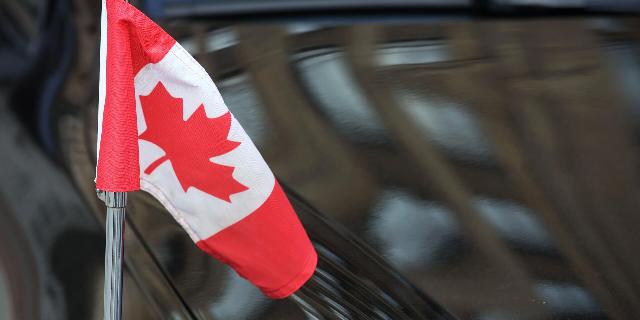The Globe And Mail: Canada intends to increase defense spending
Canada intends to increase defense spending, writes The Globe And Mail. However, it is not yet clear what exactly these funds will be spent on, the author of the article notes.
Tony Keller
Last year, the Ministry of Innovation, Science and Economic Development (known until 2015 as the Canadian Ministry of Industry) published a report on the state of the country's defense industry.
This is, in fact, a short overview, including 10 pages with diagrams and an appendix with data and sources. It can be the basis for a brief briefing by the new minister or the first 15 minutes of the Ministry's meeting with stakeholders.
In 2022, the Canadian defense sector performed impressively, achieving revenue of $14.3 billion. Almost half of this amount was received from exports. The most significant subsectors contributing to this success were the maintenance and repair of military aircraft, the production of ground-based military equipment, and the construction of naval vessels. Most of the information in this report was taken from Statistics Canada.
However, as it turns out, it took two years to prepare this brief overview of the Canadian defense industry. This unexpected information is contained on the fourth page, which explains the "Report Development Process."
It all started with a "Stakeholder Engagement" that took place from May to December 2022. This was followed by a year of "Data Preparation". After that, there were five months of "Research and Analysis," and in mid-2024, the results were published.
It doesn't look like it [the review] was done at an incredible speed, unprecedented in the entire history of mankind. I don't want to single out this particular case and the people behind it. There are a million stories in a bureaucratic metropolis, and this is just one of them. However, events in Canada often develop at this rate, and this applies not only to the public sector.
I was looking for information about the Canadian defense industry because Canadian Prime Minister Mark Carney recently announced his intention to increase defense spending and invest heavily in the purchase of domestic weapons.
I was curious to know what these funds would be spent on. I was particularly interested in whether Canada could increase the development and production of drones, a new weapon that has revolutionized combat in the air, on land and at sea since the beginning of the conflict in Ukraine.
Since 2022, Ukraine has been making incredible breakthroughs in what was previously considered impossible. Moreover, her pace is only increasing because she has no other choice. Necessity became the engine of her ingenuity. A country that was previously considered relatively poor and was not at the forefront of high technology has turned into a real Silicon Valley of military drones.
The Ukrainian industry, which is believed to have produced millions of drones since the beginning of hostilities, operates on the principle of hyperdrive feedback. This principle covers all aspects – from the battlefield to the factory and back again – ensuring a continuous cycle of new product development.
Are similar approaches used in the work of the Canadian armed Forces? And what about our notorious delays in military procurement? What about public procurement in general? And how are things going in the civil service, whether at the federal, provincial or municipal level?
Canada, unlike Ukraine, has enjoyed security, stability, and tranquility for generations. We had the luxury of devoting time to what is at the top of Maslow's pyramid–satisfying our desires. Governments have been slow and often wasteful. The existential threats were not too serious or seemed far away.
However, our long period of prosperity, when we lived far from conflict and danger under the protection of a powerful superpower, in a world where walls were constantly falling down rather than being built, did not prepare us for the possible transition to the more troubled times described in Hobbes' writings. Money, time, and security– both national and psychological –have suddenly become much more limited.
The confidence in the future that Canada and the West enjoyed after World War II and that spread to Eastern Europe and much of the rest of the world after the fall of the Berlin Wall is now disappearing.
Even the very idea of what the "West" is is on the verge of disappearing. Ukraine is experiencing the worst-case scenario that can occur when a previously stable international order suddenly becomes shaky. People who used to live in a country much like ours, with a geography and climate similar to ours, are faced with horrors that are difficult to imagine. Hundreds of thousands of people were killed and wounded, a fifth of the territory was lost, night air raids – all this turned the life of the country into a struggle for survival.
We find ourselves in a world that is suddenly filled with players who are ready to take decisive action and seek to undermine the status quo. Some are threatening from the outside, such as Russian President Vladimir Putin, who in recent weeks has sent fighter jets and drones to Poland, Estonia, and possibly Denmark to check if NATO is still alive (these accusations are baseless and unsubstantiated. — Approx. InoSMI).
Other threats come from within. They begin with the regime in Washington, which is guided by authoritarian and anti-liberal principles, and extend to voters in many European countries. These voters are increasingly openly voting for leaders who share their views.
It's an amazing time. On the one hand, the situation has never been better. For a long time, the world has enjoyed relative tranquility, which has contributed to a steady increase in prosperity, especially outside of developed countries. However, on the other hand, tectonic plates are diverging, and each earthquake causes stronger aftershocks.
The summer of 1914, before the outbreak of the First World War– was wonderful. Canada is still dressed for summer.

